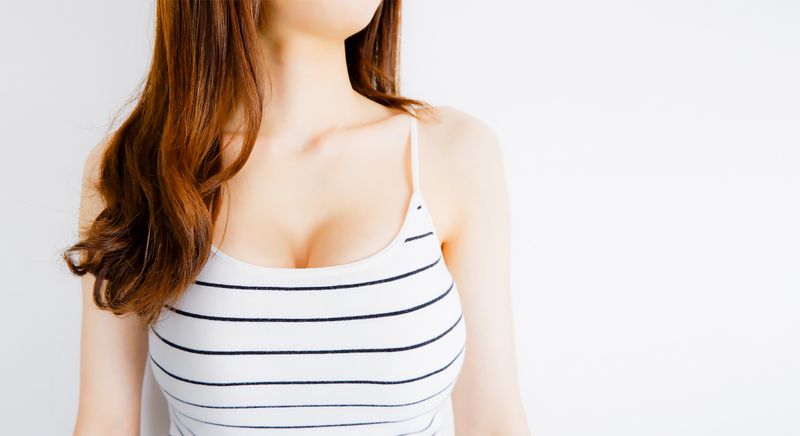- Home
- Trend
- Weight Loss Strategies
- Acne Tips
- Hair Health Information
- Blemish Removal Tips
- Acne Scar Removal Tips
- Muscle Building Techniques
- Intimate Care Tips
- Postpartum Intimate Care
- Eye Bags Wiki
- Tips for Face Slimming
- Secret of Permanent Hair Removal
- Breast Enlargement Tips
- Cure to Snoring
- Marionette Lines
- Skin-Tightening Secrets

免費體驗
B6 Bust Enhancement Treatment
1 Minute Self-Registration
Date should not be before minimal date
Breast enhancement has long been a topic of interest among women seeking to improve their body shape, increase their confidence, or restore volume lost to weight loss or childbirth. Over the years, the methods to achieve a larger breast size or more desirable breast shape have evolved significantly. From traditional breast augmentation with silicone breast implants to natural breast enlargement techniques, the options available to women have expanded, offering more personalised and natural results. Let's take a look at them today!
1
When Can A Woman Start Considering Breast Enhancement for More Fullness?

2
Comparison Between Traditional Breast Augmentation Methods

Implants
Advantages of Silicone Implants
Potential Side Effects of Silicone Implants
Advantages of Saline Implants
Potential Side Effects of Saline Implants
Summary Comparison
3
The Rise of Natural Breast Enlargement: Fat Transfer Breast Augmentation

Advantages of Fat Transfer Breast Augmentation
Potential Side Effects of Fat Transfer Breast Augmentation
4
Myth Debunking: Does All Breast Enhancement Methods Increase The Risk of Breast Cancer?


免費體驗
B6 Bust Enhancement Treatment
1 Minute Self-Registration
Date should not be before minimal date
5
Is There an Alternative for Natural Breast Augmentation?

Increase Breast Size Naturally with Perfect Medical's Advanced Technology
Advantages of B6 Breast Enlargement Treatment
Potential Side Effects of B6 Breast Enlargement Treatment
6
Closing Thoughts


免費體驗
B6 Bust Enhancement Treatment
1 Minute Self-Registration
Date should not be before minimal date
FAQ

1. Can breast augmentation surgery increase my cup size significantly, and how does it compare to a breast lift in achieving larger, perkier breasts?
Yes, breast augmentation surgery can significantly increase your cup size by inserting implants beneath the breast tissue or chest muscle, offering a noticeable change in breast size. In comparison, a breast lift primarily addresses sagging by removing excess skin and tightening the surrounding tissue to raise and firm the breasts, making them appear perkier. While a lift can improve breast shape and position, it does not significantly increase the size like augmentation does. Combining both procedures can achieve larger, perkier breasts with increased cup size.
2. How does a fat transfer procedure work for breast augmentation, and what are its benefits compared to traditional implants?
A fat transfer procedure for breast augmentation involves harvesting fat from other parts of the body through liposuction, processing it, and then injecting it into the breasts to increase size and improve shape. Benefits include a more natural look and feel of the breasts, reduced risk of allergic reactions since it uses the body's own fatty tissue, and the added benefit of contouring areas where fat is removed. Unlike traditional implants, there's no risk of implant-related complications, although the increase in cup size may be less dramatic.
3. Are there any specific risks associated with combining a breast lift with fat grafting to achieve fuller and perkier breasts naturally?
Combining a breast lift with fat grafting carries some risks, including those associated with surgery such as infection, bleeding, and adverse reactions to anaesthesia. Specific to fat grafting, there's a risk of fat reabsorption by the body, which can lead to uneven results or a decrease in the achieved volume over time. Ensuring good blood circulation to the grafted fat is crucial for optimal outcomes. It's important to discuss these risks with a plastic surgeon to weigh the benefits and potential complications.
4. How does maintaining a stable body weight impact breast implant results and the overall appearance of breasts naturally?
Maintaining a stable body weight is important for preserving breast implant results and the natural appearance of breasts. Significant weight fluctuations can affect the fatty tissue and glandular tissue in the breasts, potentially altering their size, shape, and how the implants sit or look. Stable body weight helps ensure long-lasting results, keeping the breasts in proportion to the rest of the body and minimising the need for revision surgery.
5. What considerations should be taken into account regarding breast cancer screening after undergoing breast augmentation or fat grafting procedures?
After breast augmentation or fat grafting procedures, it's important to inform your healthcare provider and radiologist that you've had breast surgery. Specialised imaging techniques, such as additional mammogram views or ultrasound, might be necessary to adequately screen for breast cancer and ensure glandular tissue is thoroughly examined. There's also a need for awareness regarding any changes in the breasts and regular self-examinations, as implants or fat grafting can alter the feel of the breasts, potentially complicating the detection of unusual lumps or changes.








